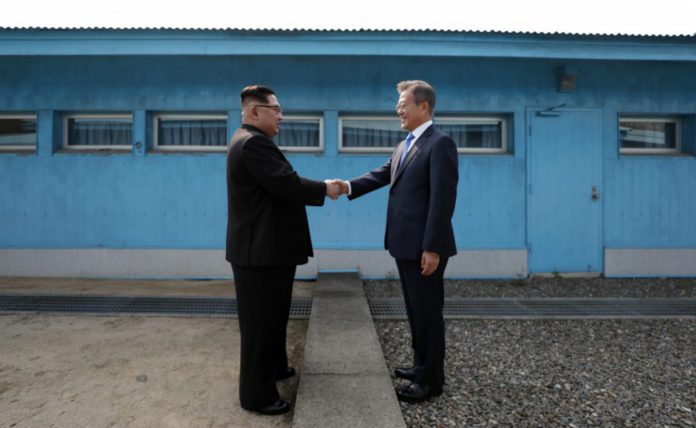ANOTHER year is coming to a close. In these late December days, people are looking to the future and wondering what 2019 has in store for them. But before jumping to that, it’s worth taking some time to reflect on 2018 – and what a year it’s been!
It has been 12 months filled with political intrigue, election upsets, and stark climate warnings. In between all the madness – of which there was plenty – there were some truly historic moments. Moments future generations will read about in history books as they look back at today’s world and try to understand what the hell was going on.
Here are our top historic events of 2018:
April: Inter-Korean Summit and the Panmunjom Declaration
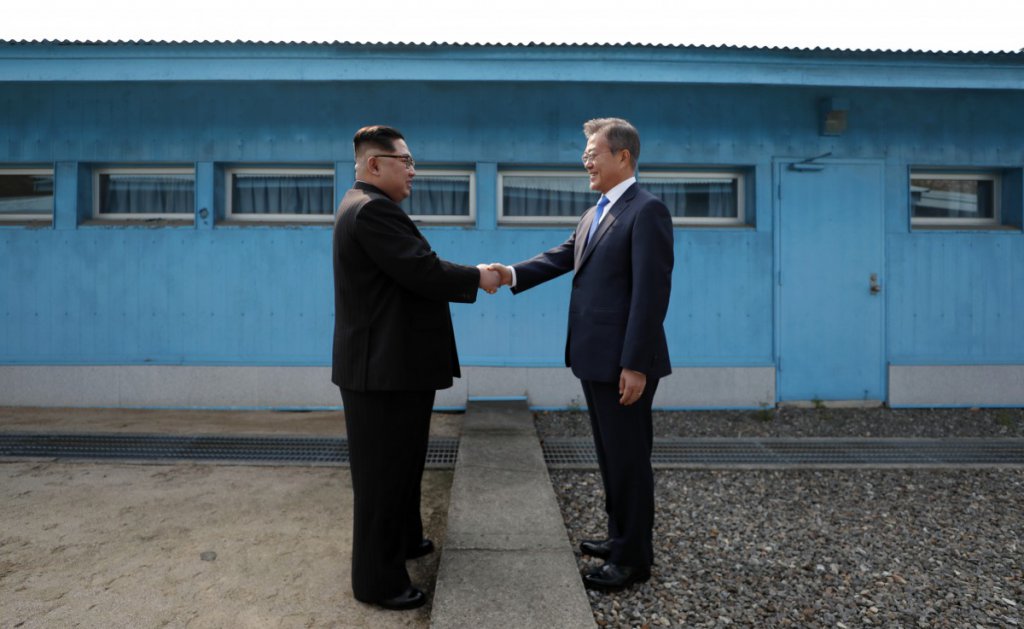
North Korea’s leader Kim Jong Un (L) shaking hands with South Korea’s President Moon Jae-in (R) at the Military Demarcation Line that divides their countries ahead of their summit at the truce village of Panmunjom. April 27, 2018. Source: Korea Summit Press Pool/AFP
On April 27, after months of escalating aggressive rhetoric, Kim Jong Un became the first North Korean leader to cross into South Korea since a ceasefire was reached in the Korean War in 1953.
The move solidified this inter-Korean summit’s place in the history books.
When greeting Kim ahead of their talks, South Korean President Moon Jae-in returned the gesture by hopping across the border and stepping momentarily into North Korea.
SEE ALSO: Korea Summit: North and South agree to complete denuclearisation of peninsula
The two seemed to get along famously, strolling together in the surroundings of Peace House where the meeting was held. And rounding of the day-long event with a symbolic tree planting on the heavily fortified border dividing their countries.
The result of the discussions was the Panmunjom Declaration that made pledges of cooperation and peace.
The two sides are technically still in conflict as the Korean War was only halted with an armistice, rather than a peace treaty. This made the pair’s pledge to sign a full peace treaty particularly significant. However, the timeline given for this to happen was the end of the year, and with only one day left to go, it looks like it’s a bust.
May: Malaysia’s General Election
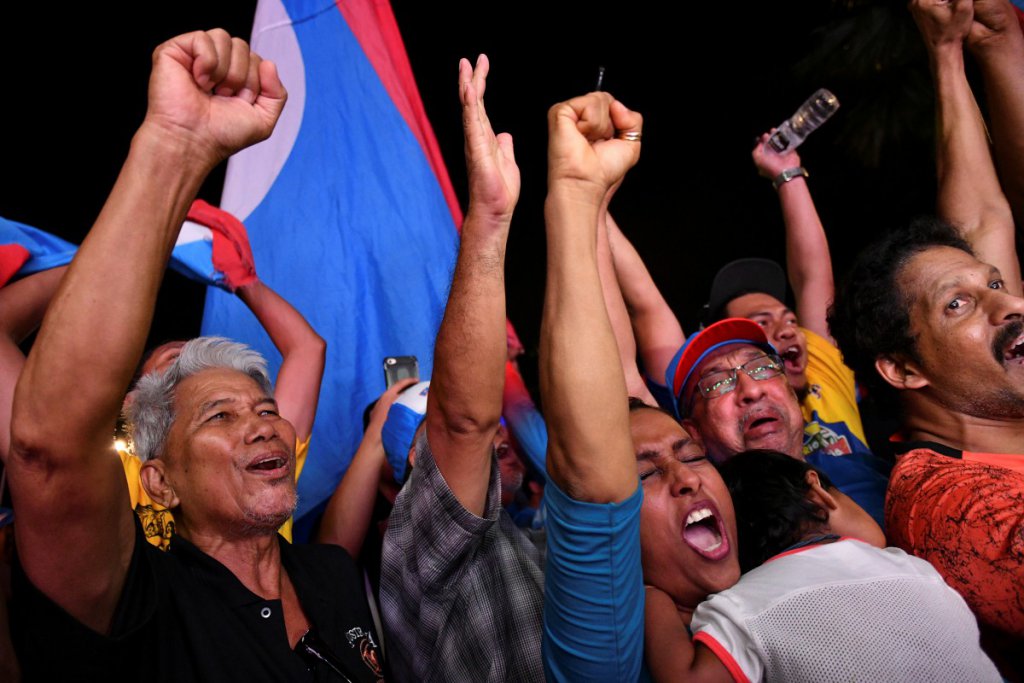
Supporters of Mahathir Mohamad, former Malaysian prime minister and opposition candidate for Pakatan Harapan (Alliance of Hope), celebrate the victory in general election outside the hotel, where Mahathir Mohamad held news conference, in Petaling Jaya, Malaysia, May 10, 2018. Source: Reuters/Stringer
For the first time since its independence in 1957, Malaysia saw an opposition coalition achieve victory in a May 9 election in which the odds were greatly stacked against them.
It was a momentous occasion that saw the now defeated Barisan Nasional coalition lose to Pakatan Harapan in an outcome that would shock Malaysians and send ripples around the world.
Former prime minister Najib Razak fought desperately to cling to his seat of power, knowing should he lose he could face charges over a corruption scandal that plagued his final years in power.
In the lead up to the election, there were accusations of election tampering with the ruling party buying votes, erasing people from the voter register, and remapping electoral districts.
SEE ALSO: World reacts to Malaysia’s shock election outcome
In a desperate final bid to win over voters, Najib announced a day before the vote that all citizens under 26 years of age would be exempt from paying income tax and the whole country would receive two days public holiday if he was victorious.
But all was in vain as current prime minister Mahathir Mohamad led the new guys to a convincing victory.
The result was hailed as a success for democracy and a beacon of people power by international media. It gained Malaysia much-warranted applause for ending a 61-year rule with a smooth transition of power.
June: Trump-Kim Summit
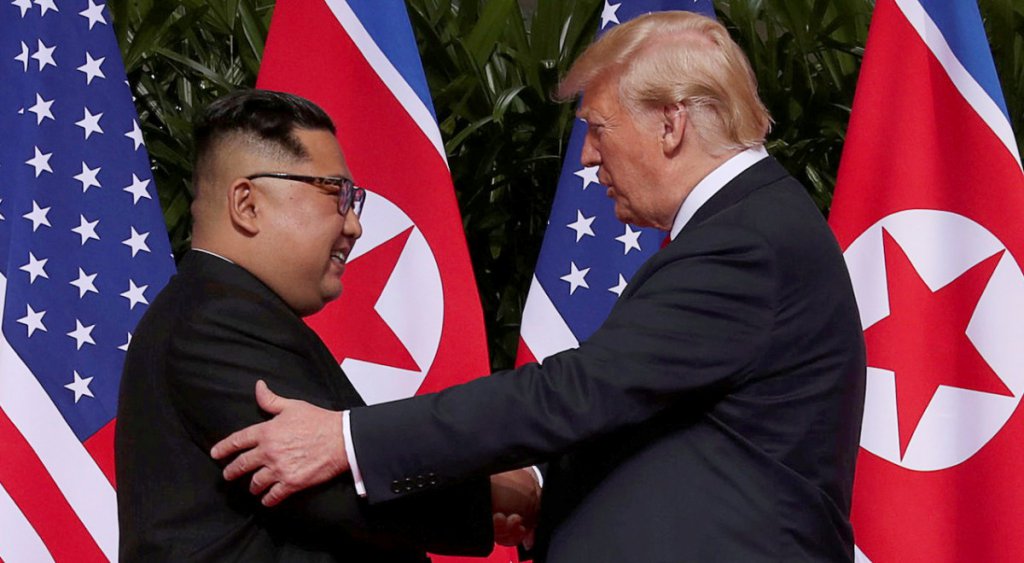
US President Donald Trump shakes hands with North Korean leader Kim Jong Un at the Capella Hotel on Sentosa island in Singapore June 12, 2018. Source: Reuters/Jonathan Ernst
June brought us the summit the world had been waiting for. After months of dramatic, often childish, name calling and nuclear threats, US President Donald Trump and North Korean leader Kim Jong Un finally came face to face.
After much deliberation, Singapore was the chosen destination and the city state unfurled the welcome mat for two of the world’s most controversial political figures.
The anticipation was high and excitement was thick in the air as the two clasped hands for the first time at the Capella Hotel on Sentosa island. But the meeting only lasted a surprisingly short few hours, during which the pair enjoyed a joint lunch and wandered through the hotel grounds.
SEE ALSO: Trump-Kim Summit: Regional winners and losers
Despite the attention of the world trained on them, the outcome of the meet was mostly hot wind and little substance.
The pair signed a joint statement pledging to build on US-North Korea relations, try to bring peace to the Korean peninsula, and work towards denuclearisation.
Disregarding the fact little concrete progress has been made since the summit, Trump still got his winning talking points and Kim got his photo-op with the first sitting US president ever to meet with a leader of the North Korea regime. So both came away happy.
Ongoing: The US-China Trade War

US President Donald Trump and Chinese President Xi Jinping pose at the Forbidden City in Beijing. November 8, 2017. Source: Jim Watson/AFP
In early July, US President Donald Trump followed through on months of threats to impose sweeping tariff hikes on China for its alleged unfair trade practices.
The US has already slapped tariffs on US$250 billion worth of Chinese products. China has set tariffs on US$110 billion worth of US goods, and is threatening qualitative measures that would affect US businesses operating in China.
The two recently called a 90-day truce after their discussions at the G20 meeting in November. Trump has made it clear, however, that should they fail to reach an agreement, he won’t hesitate to impose his planned 25 percent tariff on an additional US$250 billion of Chinese exports.
SEE ALSO: US-China Trade: Are we heading for the next cold war?
Despite the truce, both sides still appear to be on different pages when it comes to expectations. If the deadline isn’t met, it’s likely US-China trade tensions will erupt into a full-blown trade war. China’s own Ministry of Commerce warned that the dispute may even lead to “the largest trade war in economic history to date”.
The spat caused the International Monetary Fund (IMF) to lower the world’s projected economic growth for 2019 by 0.2 percent.
Predicting a global crisis in the coming months, second in command at Chinese industry leader Alibaba Joe Tsai said:
“We are so integrated that the pain is going to be felt all over the world. Everybody is going to feel the pain.”
October: Climate change – the point of no return
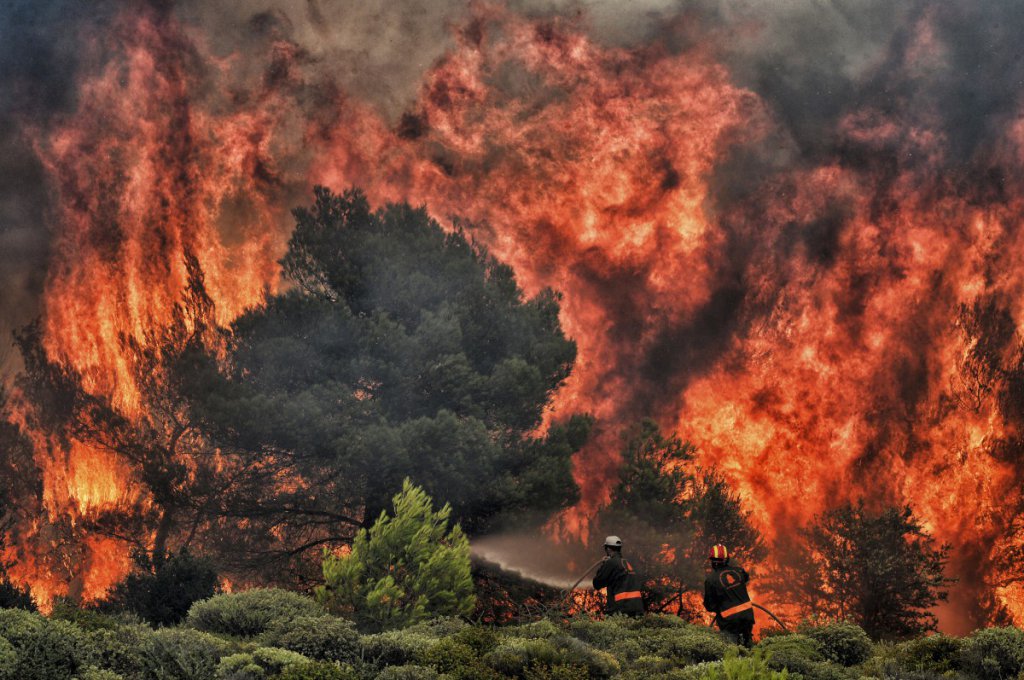
Firefighters try to extinguish flames during a wildfire at the village of Kineta, near Athens, on July 24, 2018. Source: Valerie Gache/AFP
Future generations looking back at 2018 may well see with clarity that this was the year we were warned, could have acted, but chose not to. Assuming, of course, there are future generations to ponder this.
In October, the Intergovernmental Panel on Climate Change released its most urgent call to action yet in the face of devastating global warming. In the report, climate scientists warned the planet had only 12 years before reaching the critical 1.5-degree Celsius limit set out in the Paris Agreement. After this point, we face catastrophic and irreversible climate damage.
Scientists have shown the planet is hurtling towards the point of no return at alarming speed, with carbon dioxide emissions from fossil fuels and industry projected to reach record levels in 2018.
Those in the know have repeatedly reiterated that the time to act is now.
SEE ALSO: Why the COP24 climate deal isn’t good enough
It’s easy to believe them as 2018 will also be known as the year the world burned. Countless extreme weather events struck across every continent, leaving millions facing the ravages of forest fires, drought, typhoons, and heatwaves.
Given the dire warnings, it was with great frustration that concerned onlookers viewed the government leaders’ lackadaisical response at United Nations Climate Change Conference in December.
The delegates may have given themselves a standing ovation for their efforts, but the final agreement lacked any sense of urgency and was labelled “morally unacceptable” by climate scientists.
On that note, Happy New Year everybody!
